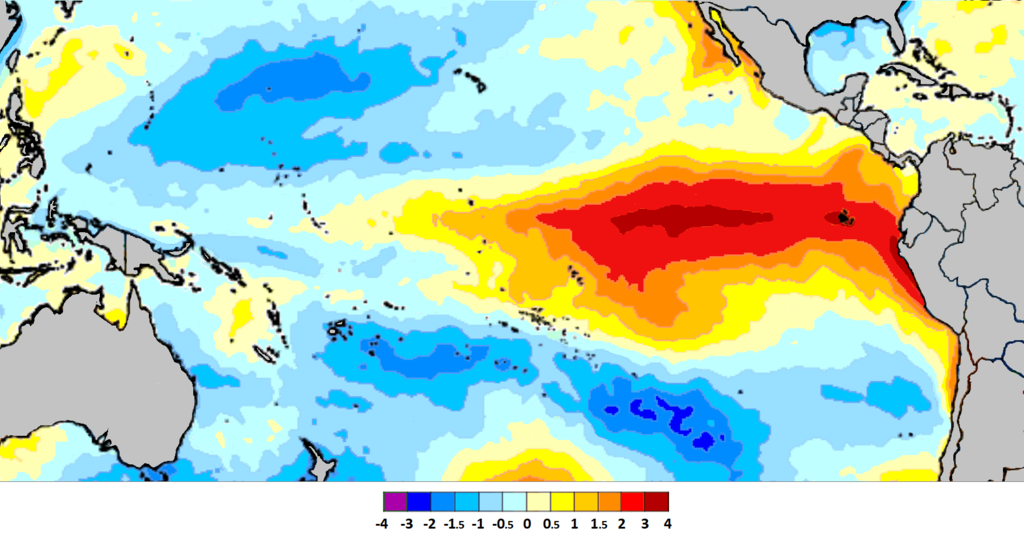
Sci & Tech Writer Luca Love explores a new AI that can predict El Niño, a weather event with worldwide consequences
Researchers from China and South Korea have created an AI that can predict El Niño up to 18 months before it occurs. El Niño is a weather event that can occur every 2-7 years, where the area of warmer water in the western Pacific Ocean around Australia spreads across the Pacific. This leads to warmer air rising across the Pacific, causing severe rainfall and drastically changing wind direction and strength across the Pacific. This has huge knock on effects on weather worldwide. El Niño can cause colder winters in northern Europe and droughts in countries such as Australia and Malaysia. It can also cause tropical storms in the Pacific, and on the other hand less severe tropical storms in the North Atlantic. Predicting El Niño has huge benefits in terms of planning water supplies for floods and food shortages as well as agricultural planning.
The main limitation on predicting El Niño is a lack of accurate weather data. Worldwide sea temperature recordings are only available from 1871, and for an artificial intelligence system this is very little data to learn from. To get around this, the team fed their AI datasets of sea temperature recordings at different depths and air temperature recordings from around the tropics. They then added data from several computer models of global climate to give a large enough dataset for the AI to learn from. The AI was then able to accurately predict El Niño up to 18 months in advance, as opposed to previous methods which could only accurately predict El Niño up to 11 months before.
The AI the team created is a convolutional neural network (CNN). These are AIs that analyse many datasets of images and find patterns between them. They are based on the vast connections of neurons found in the brain and are the basis of image recognition software and even in the AlphaGo, the AI that beat the World champion of the board game GO.
Comments